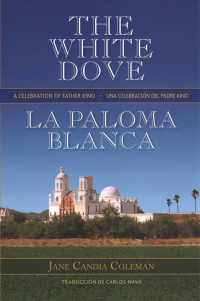Full Description
Soviet authorities had long aimed to create a classless society and eliminate the differences between the city and the countryside. Collective Farmers, Master Science! describes the Russian peasantry's transformation and ultimate extinction through the young people who became immersed in a new Soviet education system. In the process, they adopted the attitudes of Soviet modernity and abandoned the long-standing social patterns of their class.
Memory studies and Soviet sociocultural scholar Tatiana Voronina argues that inequality was created by Soviet educational institutions. This book describes how Soviet modernity was conceptualized and implemented by focusing on the work of the rural Komsomol, rural schools, and an agricultural university. The book is written as a micro-history of three distinct rural communities in the Vologda region. It is based on rich archival material from central and regional archives of Russia and oral history interviews with former members of the region's rural youth.
Collective Farmers, Master Science! illuminates the intricacy and diversity of the Soviet modernization processes that took place in the Russian provinces during the 1960s and 1970s.
Contents
Translator's Notes
Abbreviations
List of Photos
Introduction
Part I. Being Rural in the USSR
1. Ruralism in the State Discourse of Developed Socialism
2. Staying Rural: Ex-Peasants and Identities
Part II. Rural Schools
3. The Colonization of Rural Knowledge Begins
4. Education is Enlightenment, Ignorance is Darkness
5. On the Margins of Vologda Villages: Poor-Performing and "Mentally-Deficient" Students
Part III. Agrarian Institutes: "High Modernity" in the Rural Outback.
6. Cadres for the Village
7. Molochnoe: Urban Meets Rural
Part IV. The Rural Komsomol and the Reproduction of Inequality
8. Modernity's Conductor and Hostages of Backwardness
9. The Invisible Komsomol: Kolkhoz and Sovkhoz VLKSM Organizations
Conclusion
Bibliography





